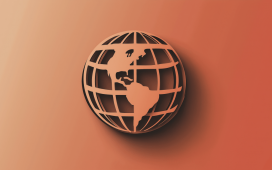Join top executives in San Francisco on July 11-12, to hear how leaders are integrating and optimizing AI investments for success. Learn More
Modernization is the lifeline of today’s organizations. It is necessary to address rising expectations of new-age customers, mounting competitive pressure from digital native incumbents, the constant need for cost optimization and the unceasing necessity of innovation for business sustainability.
These factors help explain why 50% of the global legacy application landscape is expected to modernize in the next two years, with 70 to 90% modernizing in the next five years, according to recent research from the Infosys Knowledge Institute.
With great pressure on companies to modernize, they must also recognize that it can be disastrous if done the wrong way. But how can companies achieve modernization without taking undue risk? After all, the risk-return principle reminds us that the greatest returns typically come from taking the greatest risk. As expectations rise about modernization’s potential return, there is a corresponding rise in the potential for an increase in risks associated with it.
Four different types of risk associated with modernization
- Operational risk: This risk mostly arises due to cultural change and unfamiliarity with new technology and updated business processes affecting business continuity. There can be steep costs associated with an interruption in business continuity, including lost productivity, depressed client satisfaction and security breaches that arise as personnel navigate new systems.
- Financial risk: Any modernization requires some form of early investment to transform from the as-is state to the desired state. This includes investment in obtaining newer technology, updating age-old legacy processes and acquiring new skills, to name a few. This effort can be expensive, and companies must ensure that they have the resources to fund the initiative and generate a return on investment.
- Reputational risk: When organizations pursue modernization without having a clear roadmap of where they want to go and what they want to achieve, the result can be failure. It can damage a company’s reputation and erode customer trust. And it’s more common than you may think. A report published in June 2022 by vFunction and Wakefield Research revealed that 79% of app modernization projects fail.
- Workforce risks: The people factor of modernization is critical. An Infosys survey of more than 1,500 technology leaders showed that more than half of those who responded cited the lack of skills and talent as their biggest fear related to modernization. If a significant number of employees lack the necessary skills, it can create several issues such as reduced productivity, increased costs, delayed timeline, poor quality output, and finally, an unhappy workforce.
Numerous factors to mitigating risk in modernization
These risks underscore the importance of developing a risk mitigation plan — and following it. In doing so, organizations must keep several factors in mind.
Event
Transform 2023
Join us in San Francisco on July 11-12, where top executives will share how they have integrated and optimized AI investments for success and avoided common pitfalls.
Building a business use case to convince decision markets to budget for modernization
Securing the funding for a modernization plan doesn’t have to be complicated, but a few basic measures will help, beginning with identifying precisely why new technology is needed. How is the existing technology hampering the company? And what technology is being used by other peer companies?
Next, identify the gains that will be realized from modernization. What internal efficiencies will be realized? For example — cost savings? And how will it contribute to enhanced customer satisfaction?
Be sure to note not just the total cost of the modernization, but what it looks like over time, factoring in the savings that will be realized from having the new tools fully implemented.
Establish clear goals and objectives
Define clear goals and objectives to ensure that everyone is working towards the same outcome. Regularly monitor and evaluate the progress of modernization to identify new risks and adjust the risk management plan as needed.
Identify technology and business stakeholders
Building support for modernization among key software architects, IT team leaders and developers will greatly increase the likelihood of success. Also critically important will be getting buy-in from all the business stakeholders — including the C-suite — as well as customers, vendors and partners. If the outcome of the modernization pleases everyone, but the company’s largest customer doesn’t like it, it’s not a successful strategy.
Choosing the right architecture and technologies
This seems elementary, but the array of choices presented by a modernization strategy can be overwhelming. And the architecture and technology that may seem ideal for one department may be suboptimal for another. Ensure that the evaluation — and the decision-making process — includes a wide range of stakeholders.
Understanding people, process and technology requirements
A key ingredient in the recipe for smooth modernization is for personnel to have had an opportunity to develop the skills and knowledge needed to adapt to new practices. They must be able to address the inevitable questions.
The workforce needs to be upskilled and reskilled not only in the new technologies but the new ways of working enabled by new technologies. This can include niche skills such as reengineering, database modernization and rules externalization. These steps should be an integral part of the modernization program plan, as they can minimize disruptions. Regrettably, many companies skimp on this dimension of modernization.
The power of partners
The magnitude and complexity of modernization makes partnerships a critical — and often overlooked — part of the process. These partners can include startups, hyper-scalers and private cloud companies, as well as others with specialties in relevant products, tools, apps, platforms, security, data center and infrastructure solutions and services.
Risk management and modernization done right
Risk management must be incorporated into every modernization program. Done right, it can ensure the full realization of modernization’s many benefits: achieving increased resilience, realizing greater value from exponential technologies, creating a more scalable and digital backbone and providing better customer experiences.
Gautam Khanna is VP and global head of the modernization practice at Infosys.
DataDecisionMakers
Welcome to the VentureBeat community!
DataDecisionMakers is where experts, including the technical people doing data work, can share data-related insights and innovation.
If you want to read about cutting-edge ideas and up-to-date information, best practices, and the future of data and data tech, join us at DataDecisionMakers.
You might even consider contributing an article of your own!










